My research looks at the behaviour of thin-film and nanostructured magnetic materials
In these materials the interactions between the magnetic and electrical properties are particularly interesting. They allow us to access the spin on the electrons in addition to their charge. This area of research is known as spintronics and has huge potential for the development of novel technological devices for many applications.
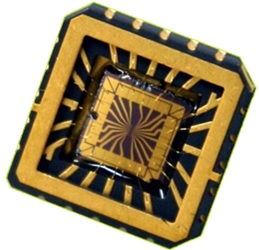
Modern devices such as computers, phones and televisions have become a huge part of our lives. It has taken huge amounts of scientific research and engineering to produce these devices we have today.
Future devices will make use of the fundamental physical understanding of advanced materials that we are working on today.
Using the latest data science techniques to collect, analyse and visualise data

Data collection
Using a wide range of specialised sensors and detectors to get the data needed to explore new science and feed into automated control systems.

Data processing
Data analysis on-the-fly, on distributed systems, and employing supercomputing clusters. Model fitting, machine learning and other techniques help extract useful information and understanding from scientific data.

Data visualisation
Exploring and presenting information contained in complex multi-dimensional datasets through interactive tools, animations and plots.
Research in nanostructured magnetic materials has huge potential to impact on our every day lives

Nanoparticle control
On-chip manipulation of biological and chemical species is possible through nanoparticle functionalisation.
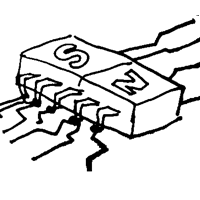
Memory & processing
Discover how future technologies could store and process information in the form of magnetic bits.
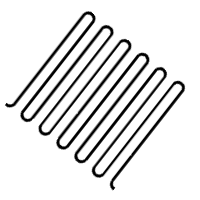
Advanced sensors
High-tech sensors based on magnetic thin films and nanostructures offer new advantages.

More
Many more applications of nanoscale magnetism and magnetic materials are likely.
My research is based around several themes
Nanoscale magnetism
The magnetisation direction in magnetic structures is determined by various energy contributions. By changing the shape of a structure you gain control over the demagnetisation energy and can induce an anisotropy known as shape anisotropy to favour magnetisation along certain directions.
Using nanofabrication techniques I have created many systems to manipulate individual domain walls in nanowires as well as exploring their interactions at verticies and more complex artificial spin ice systems.
Magnetisation dynamics
The dynamic behaviour of magnetic systems is an important factor for the development novel technologcial devices. Our understanding of these dynamics is based on a combination of the damping and precessional behaviour. Magnetisation dynamics happens on the nanosecond timescale or at GHz frequencies in the frequency domain.
Experiments on dynamic timescales can reveal fundamental understanding about material physics as well as opening avenues for the control of magnetisation dynamic processes.
X-ray detected magnetism
X-rays provide a powerful way to probe the behaviour of magnetic materials. With an energy range covering the transitions with electron shells responsible for magnetism x-rays can provide an element specific and surface sensitive probe of magnetic moments. Even the spin and orbital contributions to these moments can be identified.
I am experienced in multiple x-ray characterisation techniques such as x-ray circular magnetic dichrosim (XMCD), x-ray magnetic scattering and reflectivity, small angle x-ray scattering (SAXS).
Recent publications
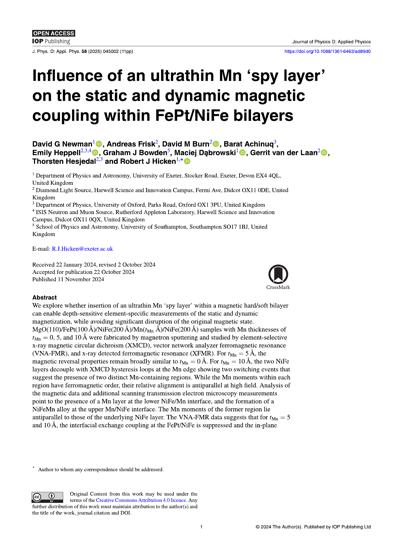
D. G. Newman, A. Frisk, D. M. Burn, B. Achinuq, E. Heppell, G. J. Bowden, M. Dabrowski, G. van der Laan, T. Hesjedal and R. J. Hicken
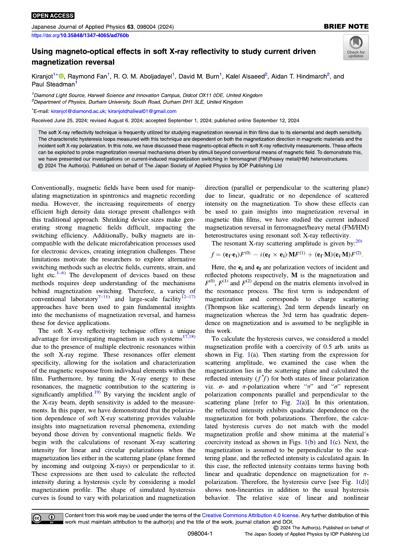
Kiranjot, R. Fan, R. O. M. Aboljadayel, D.M. Burn, K. Alsaeed, A. T. Hindmarch and P. Steadman
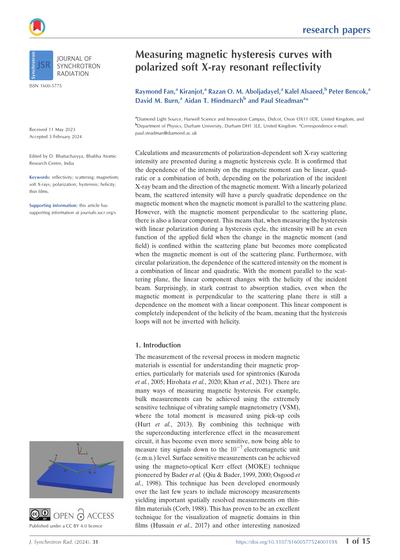
Measuring Hysteresis Curves with Polarised Soft X-ray Reflectivity
R. Fan, Kiranjot, R. O. M. Aboljadayel, K. Alsaeed, P. Bencok, D.M. Burn, A. T. Hindmarch and P. Steadman

Spin pumping through nanocrystalline topological insulators
D.M Burn, J-C Lin, R. Fujita, B. Achinuq, J. Bibby, A. Singh, A. Frisk, G. van der Laan and T. Hesjedal
